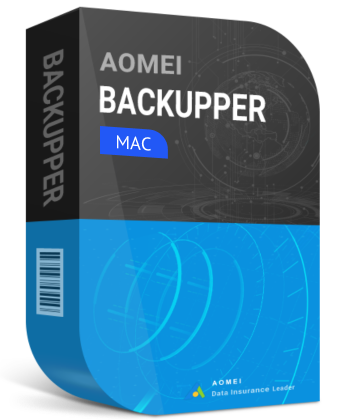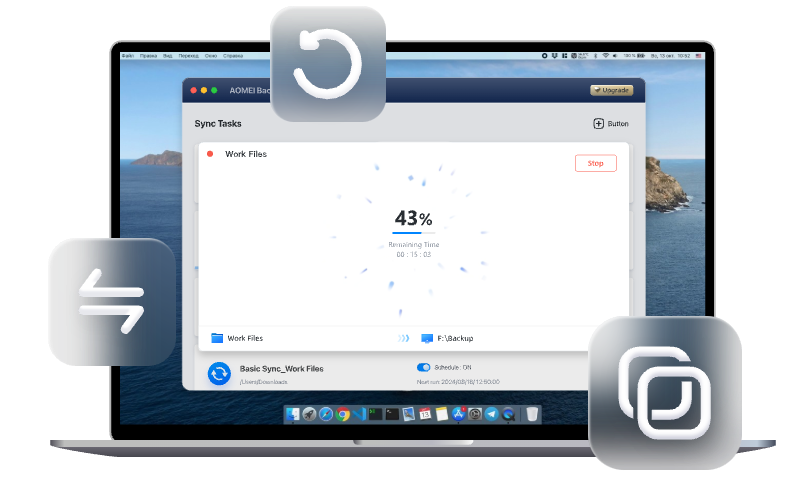Understanding Mac Core Sync: A Comprehensive Guide
This article delves into Mac Core Sync, a vital component for synchronizing files and data across your Apple devices. We'll explore what Mac Core Sync is, and how to use it, and provide a professional alternative Mac syncing tool.
Core sync would like to access files on a Macbook
“Urgent: I need the advice of an expert-level user of MacBooks. Do you personally recommend allowing "Core Sync" access to my downloads folder on my 2020 MacBook Pro? I just downloaded the newest software update of macOS, Monterey version 12.0.1, and a pop-up window immediately appeared with the following message: "Core Sync" would like to access files in your Downloads folder". Will allowing access to "Core Sync" jeopardize or reduce my MacBook’s security? I'd sincerely appreciate your advice. Thank you in advance.”
– Discussions.Apple
What Is Core Sync Mac?
Core Sync is a key background process in Adobe Creative Cloud for Mac. It helps manage the synchronization of files and assets across different devices and applications. This ensures that your files are always up-to-date and accessible from anywhere. Core Sync also supports real-time collaboration and keeps your work consistent and version-controlled across all your devices.
Core Sync is essential for ensuring Adobe applications run efficiently on your device. It keeps all Creative Cloud files synced across different devices and the cloud. Additionally, Core Sync ensures that functionalities like Adobe fonts are readily available to users.
Key Functions and Features
⚡Automatic Updates: Core Sync automatically updates files stored in Adobe Creative Cloud whenever changes are made. This means any edits, deletions, or additions to files on one device are promptly reflected across all devices connected to the same Adobe account.
⚡Real-Time Syncing: This ensures that the most current version of a file is always available, eliminating the need to manually transfer files or worry about outdated versions.
⚡Version Control: The process also handles version control, allowing users to track changes and revert to previous versions if necessary.
⚡Cloud Backup: By storing files in the Adobe Creative Cloud, Core Sync provides a reliable backup solution. This helps prevent data loss due to hardware failures or accidental deletions.
⚡Data Encryption: Files synced through Core Sync are encrypted, ensuring that data is secure during transfer and while stored in the cloud.
What Causes "Core Sync High CPU Usage"
Core Sync runs quietly in the background, constantly syncing files between your computer and Adobe's servers. When dealing with large files, Core Sync can consume more CPU power than usual, which might cause your computer to overheat and slow down.
Besides file size, several other factors can lead to Core Sync using a high percentage of your CPU:
1. Large File Synchronization: When Core Sync attempts to synchronize large files or a significant number of files, it can strain your CPU. This heavy workload increases CPU usage as the process works to upload, download, or sync the files.
2. Conflicts with Other Applications: Core Sync may conflict with other software running on your computer, particularly if multiple applications are trying to access or modify the same files.
3. Corrupted or Outdated Core Sync Files: Corrupt or outdated Core Sync files can lead to inefficient processing, causing CPU usage to spike as the application struggles to function correctly.
4. High Volume of Sync Activities: A high volume of synchronization activities, such as frequent file changes or syncing across multiple devices, can overload Core Sync and elevate CPU usage.
5. System Resource Limitations: Core Sync can strain your CPU if your system has limited resources or if other processes are already consuming a significant amount of CPU power.
How to Fix This Issue
Solution 1: Restart Your Computer
Restarting your computer is often an effective way to resolve various common issues, including high CPU usage. If you’re experiencing high CPU usage due to Core Sync, begin by restarting your computer. This action will help lower the CPU load and bring the system temperature back to normal. Once your computer restarts, check if the issue persists.
Solution 2: Stop the Core Sync Process
If restarting doesn’t resolve the issue, you can manually stop the Core Sync process to address the high CPU usage. Here’s how to do it:
- Open Spotlight Search by pressing the Command and Spacebar keys together.
- Type "Activity Monitor" in the search field and open the Activity Monitor application.
- Click on the CPU tab to view processes using CPU resources.
- In the search bar at the top right of the window, type "Core Sync."
- Select Core Sync from the list of processes and click the “x” icon to stop it.
Solution 3: Update the Software and Restart Your Mac
To fix high CPU usage issues, updating your software can be an effective solution. Follow these simple steps to update your Mac:
- Open "System Preferences" and select "Software Update."
- Navigate to "Advanced" settings to adjust update preferences. Additionally, you can check for updates within individual applications if needed.
How to Remove Core Sync From Your Mac After Uninstalling Adobe CC
If Core Sync persists after uninstalling Adobe Creative Cloud, you can remove all Adobe-related property list (.plist) files. These files act as hooks for background processes in macOS, running hidden LaunchDaemons and LaunchAgents.
1. Open Finder: Launch Finder from the Dock.
2. Go to Folder: Click "Go" in the menu bar, then select "Go to Folder."
3. Access Directories: Enter the following directories one by one:
~/Library/LaunchAgents
/Library/LaunchAgents
/Library/LaunchDaemons
4. Remove Adobe Files: In each directory, locate and select all .plist files starting with "com.adobe." Control-click the selection and choose "Move to Trash."
5. Restart Your Mac: Restart your Mac to apply the changes.
Alternative Software to Mac Core Sync
AOMEI Backupper Mac is an excellent alternative to Core Sync for Mac users. It offers a robust solution for both backing up and syncing your data. With its user-friendly interface and powerful capabilities, protecting your files is simple and effective. AOMEI Backupper ensures that your data synchronization is reliable and secure, keeping your information safe at all times.

- Effortless File Sync: Easily keep all your files synchronized on your Mac for complete data protection.
-
Flexible Sync Options: Choose from Basic Sync, Mirror Sync, and Two-Way Sync to fit your synchronization needs.
-
Multiple Sync Destinations: Sync files to various storage options like local drives, cloud storage, NAS devices, external hard drives, USB sticks, SD cards, and more.
-
Fast and Secure: Achieve quick and secure file synchronization with advanced technology, ensuring your data is encrypted and protected throughout the process.
Step 1: Download and install the AOMEI Backupper Mac software. Open the program and select "New Task" to start.
Step 2: Pick the synchronization method that best fits your needs. Mirror Sync or Two-Way Sync are great options for syncing two folders.
Basic Sync: This method copies files from one location to another without deleting them from the original location.
Mirror Sync: Creates an exact replica of the source files at the destination, including removing files at the destination that no longer exist in the source.
Two-Way Sync: Keeps files in both the source and destination locations updated, ensuring that changes in one location are reflected in the other.
Step 3: Set the source folder and destination folder for the sync.
Step 4: Customize the sync schedule and other options to suit your workflow.
You can set how often the sync occurs: once, hourly, daily, weekly, or monthly. Additionally, you can schedule the specific start time and decide if the system should hibernate or shut down after the sync is complete.
In the Options menu, you can customize the sync process to match your needs, including selecting specific files to include or exclude, and setting preferences for folders to exclude from the synchronization.
Step 5: After setting everything up, click the "Sync" button and wait for the process to finish.
Frequently Asked Questions
Q 1: How do I stop Mac Core Sync from using too much CPU?
A 1: To reduce CPU usage, try restarting the Mac Core Sync process via Activity Monitor, updating macOS, closing unnecessary applications, and rebooting your Mac.
Q 2: Why are my files not syncing with Mac Core Sync?
A 2: Ensure you have a stable internet connection, verify sync settings in System Preferences, sign out and back into your Apple ID, check iCloud storage space, and manually sync files if needed.
Q 3: How do I reset Mac Core Sync settings?
A 3: Navigate to ~/Library/Application Support in Finder, locate the Core Sync folder, move it to the Trash, and restart your Mac to reset the settings.
Practical Tips for Managing Mac Core Sync
- Regularly Update macOS: Keeping your macOS updated ensures compatibility with the latest sync features and fixes potential bugs.
- Monitor System Performance: Use Activity Monitor to keep an eye on Mac Core Sync's CPU and memory usage, addressing any anomalies promptly.
- Optimize Storage: Regularly review and clean up your iCloud Drive and local storage to prevent sync issues caused by insufficient space.
Conclusion
Understanding and managing Mac Core Sync is crucial for maintaining a seamless synchronization experience across your Apple devices. By following the solutions provided and leveraging tools like AOMEI Backupper, you can ensure your files are consistently and efficiently synchronized. Embrace these practices to optimize your workflow and maintain an organized digital ecosystem.

